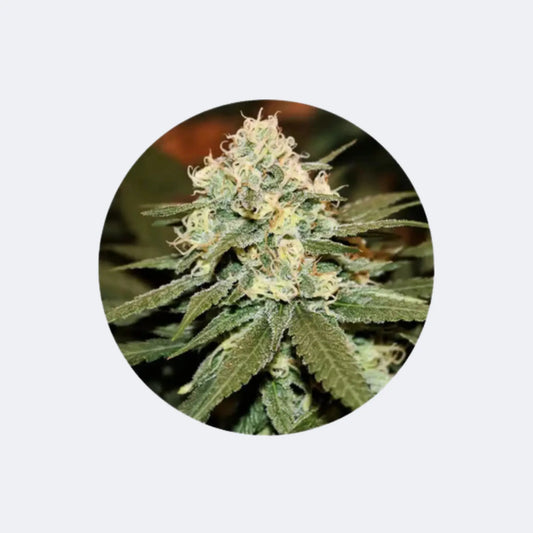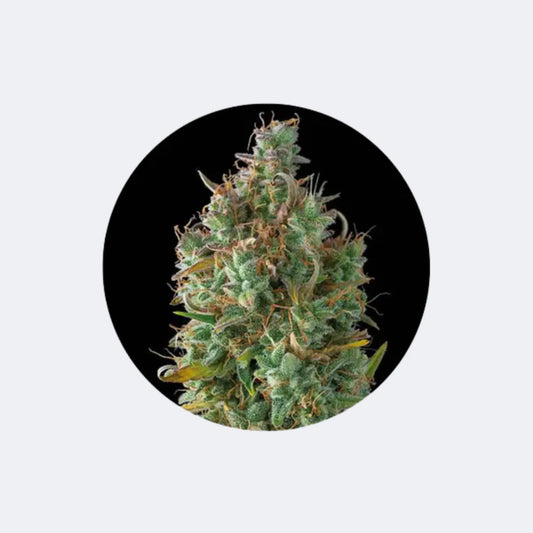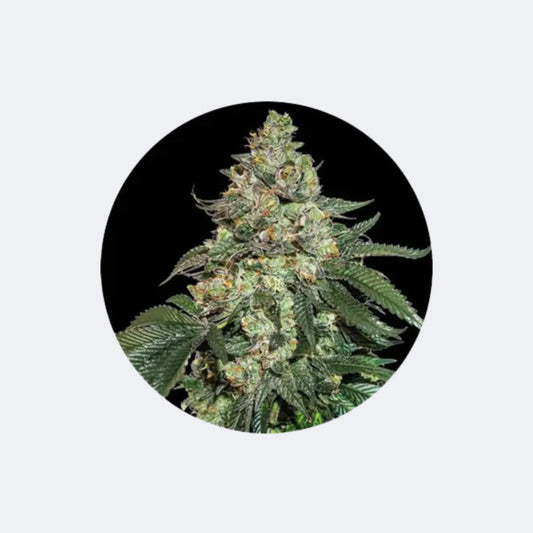
Main lining (HST+LST)
Andreas LeschkeShare blog post
How to go from grower to cannabis designer
Anyone who wants to achieve complete control over their weed plants will not be able to avoid "mainlining." This combination of topping (HST) with LST not only doubles the yield compared to traditional growing, but also offers the possibility of controlling the number of shoots to achieve uniform shoots that, with maximum light utilization, conjure up wonderfully uniform and enormous buds.
"Mainlining" is absolutely NOT for beginners, but rather something for professionals who are happy to experience a longer vegetative phase with their ladies, where regular training, trimming, bending and topping will become a familiar routine.
The fact that you have to accept a longer vegetative phase rules out automatic genetics. Mainlining is only applicable to photoperiod genetics, as the vegetative phase is extended from use to use through regular training, including a recovery phase.
If you use it correctly, you'll achieve a design on your ladies that, viewed from above, will resemble a cannabis sun. It's definitely not for speedy growers looking for quick yields; rather, it's a technique designed for enthusiasts eager to achieve perfection as a grow master.

Goal and benefits of mainlining
The goal of this combination of HST + LST during the vegetative phase is to create flat growth of several main branches. Compared to conventional growth, we end up with not just one main branch, but (depending on how far you want to train it) 8 to a maximum of 32 main branches.
The plant stays close and flat to the ground throughout the growing season, as if trying to stay under the radar, and then rises during the flowering phase to enchant us with a firework display of numerous wonderful-looking flowers!
The advantages that this complex training method provides us with are:
full control over growth and direction
a fuller canopy
double yield
Space optimization
maximum light utilization
The disadvantages of mainlining:
not applicable to autoflowers
longer growth phase
regular topping, trimming and bending
possibly repotting
With main-lining, the plant is trained so that it doubles the number of main branches after each training session. This way, the plant develops many times more roots in order to supply the main branches with sufficient nutrients to boost them.
Added to this is the fact that we guide the shoots parallel to the soil, toward the edge of the pot. Therefore, at some point, when the roots have completely taken over the soil and the shoots are fixed to the edge of the pot, repotting will be necessary for further training.
Main-lining requires a lot of stress from your girls, so you need to make sure the plants are healthy and robust enough to recover quickly after each use.
The goal of how many main branches you want to achieve should therefore be carefully considered. It's not certain that 32 main branches will produce higher yields than 8. As I already mentioned in the blog post "Topping," there comes a point where further topping doesn't increase the yield further, but instead spreads it across several, smaller buds.
It should also be considered that with maximum yield from the main lining the growth phase is considerably longer than with fewer main branches.
If the yield is not increased further, it is no longer productive, especially since you can then save the plant from further repotting and let it flower earlier.
Application of mainlining
For main-lining, we only need clean and disinfected scissors and some plant wire or cable ties.
Our girls, whom we want to get into shape, should already have developed 5 to 8 nodes for the first training treatment in order to have reached the right age to be able to recover quickly from the cutting.
In the first step, the plant is topped after the 4th node, leaving 4 nodes. Next, the two lower nodes are removed to retain only the two upper nodes.
The four remaining shoots are now secured parallel to the ground with some plant wire, cable ties, or plant wire so that they remain flat above the ground. Viewed from above, the plant should now resemble a cross.
After a short recovery period of 3 to 4 days, the lady should have recovered sufficiently so that a few days later she will have formed enough (3 to 4) new shoots to double the number of main shoots.
The first thing that matters here is that two side shoots are produced that run parallel to the ground so that, when viewed from above, they grow sideways away from the main shoot and not shoots that grow below or above the main shoot.
The available space to the edge also plays a role in determining which shoots are removed and which are retained. For example, if you have very little space to the edge of the pot, you might want to consider keeping the bottom two shoots so that they still fit, thus saving you and especially the girl from having to repot, as this would mean additional stress and lost growth.
Typically, the first or second shoot is used, depending on which of these shoots grows parallel to the ground. Anything above the two shoots we want to preserve is topped.
Once you have decided on the first side shoots, you only need to fix them parallel to the ground with plant wire, tension wire or cable ties, just like the first time, so that they can continue to grow flat.
If you want to keep the two side shoots of the second node, we cut away the first shoot including the palm leaves, so that only the second node remains, from which we fix the side shoots parallel to the ground.
Once we reach this stage, our lady will already have 8 main stems designed by us, which can grow into proud main vines that could be sent into flower after a short period of 1 - 2 weeks.
Anyone who wants to take the mainlining game to the extreme will inevitably have to repot their lady after this step. Of course, repotting should only be done once the girl has fully recovered and has continued to grow so vigorously that you can already hear the roots calling for more space.
After repotting, the lady should be given a recovery period of one week until she can resume growth and noticeably develop further.
Then the steps would simply be repeated. Two new side shoots are kept, growing parallel to the ground, and then pinned. Everything above and below these two new shoots is topped and trimmed.
This doubles the number of 8 main shoots to 16. After a few days of recovery and further growth, this could then be expanded to 32, but this should be the maximum.
In conclusion:
This training method is individual. In my personal growing experience and opinion, you should only attempt to grow up to a maximum of eight main stems.
Please consider:
Every time we top, trim, and bend the plant, it is stressed, so it needs time to recover. The doubling of the main stems naturally also means that the plant will demand ever more nutrients and soil. A balanced fertilization is absolutely essential to ensure sufficient nutrients are available to supply the ever-increasing volume of the plant.
Space should also be considered when mainlining indoors. While the height of the Cheshire Cat will save space, the cat will require more space in width after each mainlining session.
Therefore, there's nothing wrong with beginners practicing mainlining just once at the beginning, and then sending four main stems into flower shortly thereafter. This makes it easier to practice fertilizing the plants more heavily to find the right amount, and you'll already achieve a higher yield than without mainlining.
In addition, you can control and adjust the width of the plant better than if you have trained three girls to the point where each has eight main shoots and you suddenly realize that they no longer have enough space in the grow box.
If you grow it outdoors, please keep a constant eye out for pest infestations and take immediate action. The plants are already under enough stress from training, so they need to be in optimal condition to delight us with a successful yield of wonderfully fragrant blooms.
Aphids, fungus gnats, spider mites, etc. would be absolute overkill, so I can only advise everyone to use beneficial organisms such as nematodes, ladybird larvae, predatory mites, etc. as a preventative measure, so that parasites don't even get a chance to do anything bad to our beloved fun plants.
We thank the author Jorge Rieger for this blog post on the topic of "Main-Lining (HST+LST)." Feel free to follow him on his Facebook account. --> Click here






